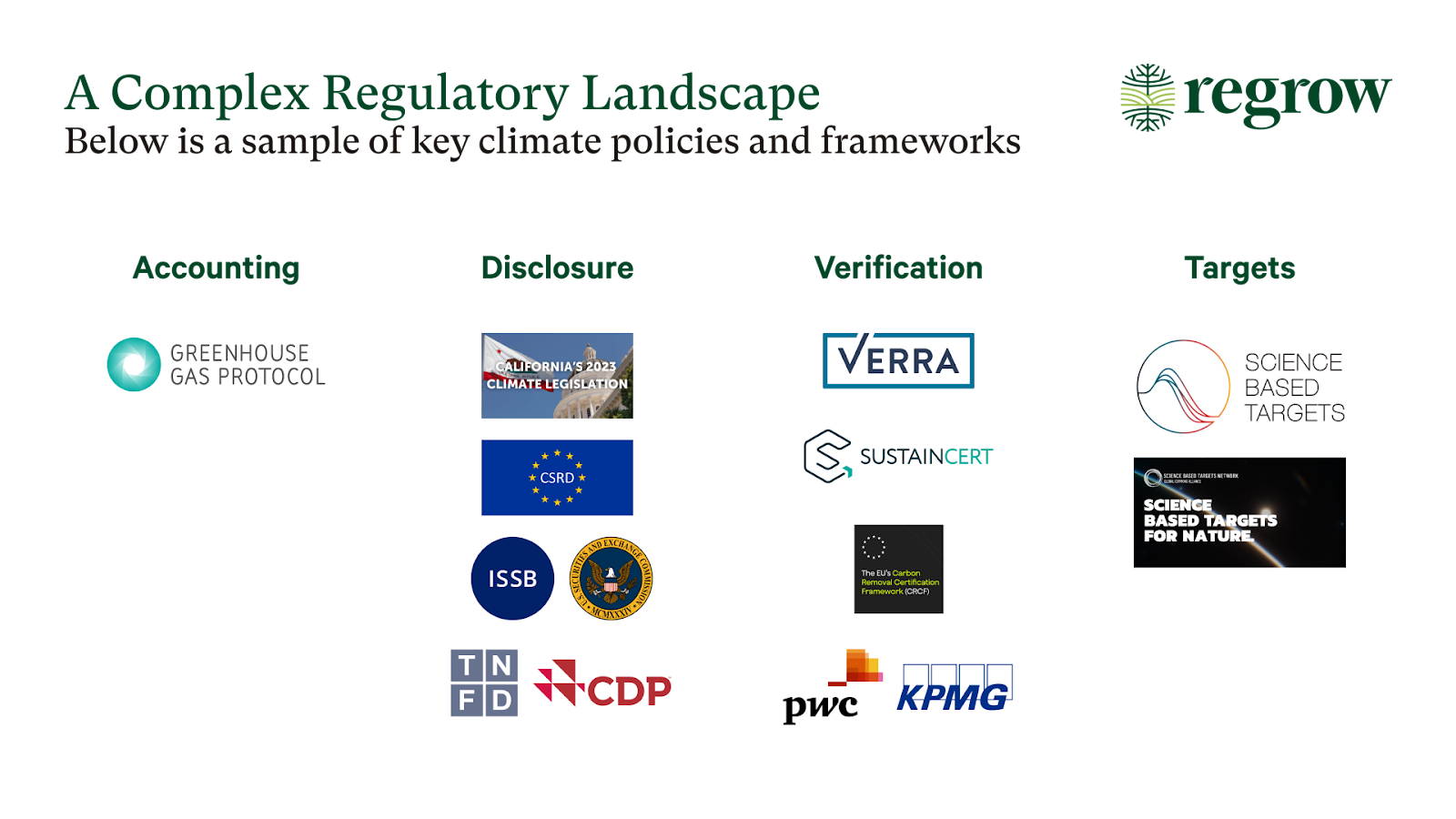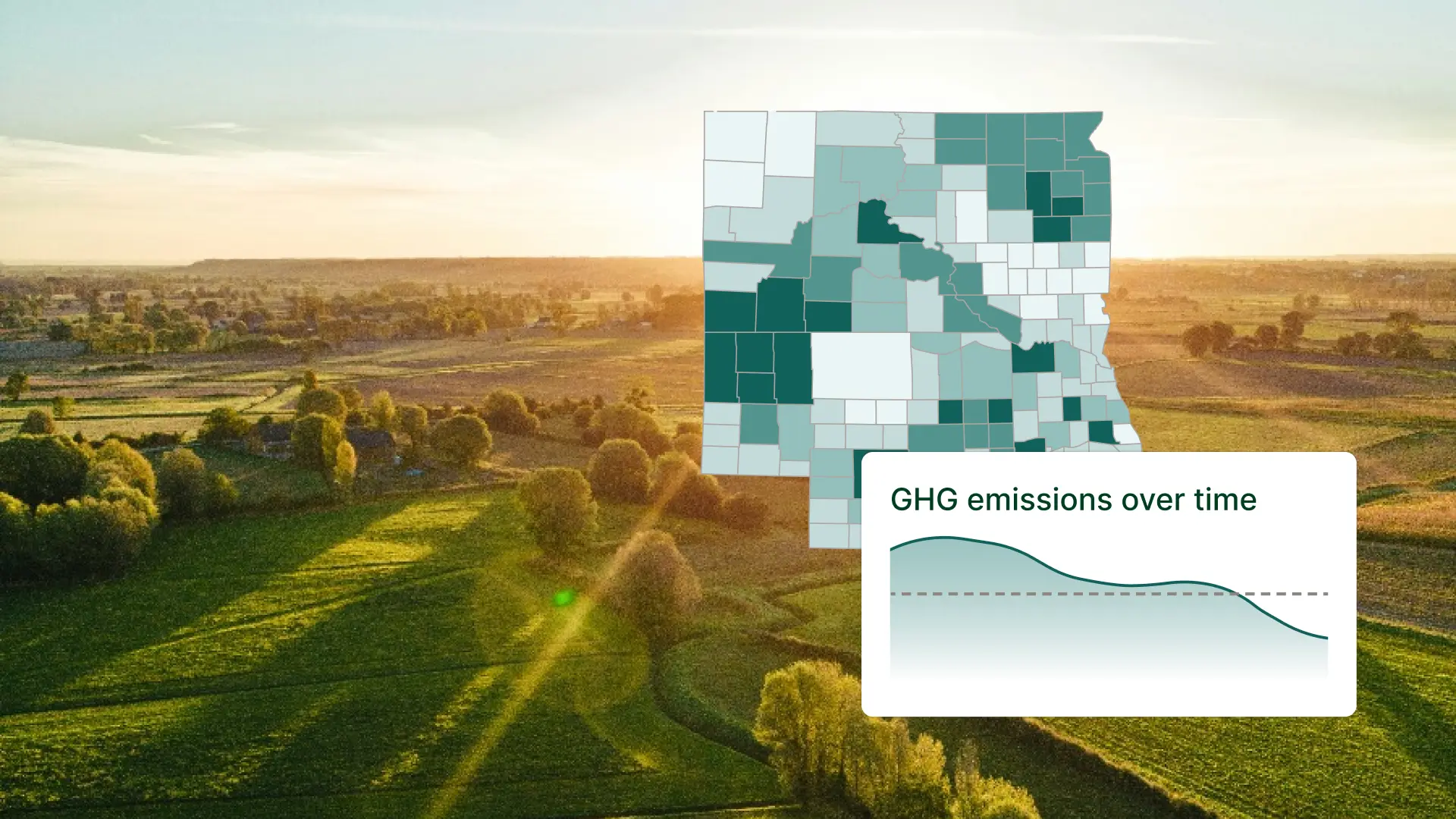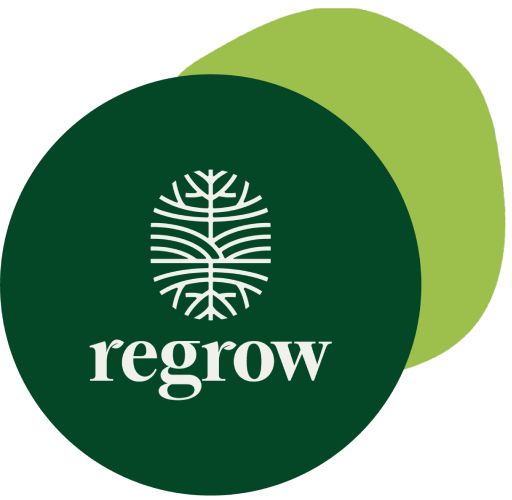
The risk of climate change on food and agriculture businesses has become undeniable. Faced with disruptions to critical supply chain inputs, sustainability-focused consumer expectations and an evolving regulatory landscape, taking climate action has officially moved from a “sustainability team” problem to a critical business line item.
Still, sustainability leaders are responsible for demonstrating the importance of abating company carbon footprints to departments across the organization. This includes creating alignment with Procurement, R&D, Marketing, and Compliance, all of whom play critical roles in creating a more resilient agriculture supply chain.
How can food & ag sustainability owners unite leaders of these varied departments to realize the business value of climate action?
The right data and insights can unlock company-wide success
The key to unlocking this opportunity lies in a shared understanding of a company’s scope 3 emissions, what is driving those emissions, and how emissions impact different business units. Scope 3 emissions (those within a company’s supply chain) represent the lion's share – ~90 percent – of food & ag companies’ footprints, with the majority of those emissions coming from on-farm processes. Note: Because of the outsized importance of on-farm emissions within overall food & ag scope 3 emissions, we will use those terms interchangeably throughout this piece.
Example scope 3 data points
- Which commodities are we procuring that have the highest emissions factors?
- Which suppliers are sequestering the most carbon in their fields?
- What regions have the greatest potential for additional carbon abatement?
With an understanding of – and, critically, actionable data on – a company’s scope 3 emissions, Procurement, R&D, Marketing, and Compliance teams can meet the goals of their business units while creating company-wide agriculture resilience.
Procurement & Supply Chain
Extreme weather events like droughts, floods and fires are disrupting supply chains with increasing frequency and intensity. These disruptions complicate sourcing and distribution, forcing companies to quickly find alternative suppliers, often at higher costs. According to the BCI Extreme Weather and Climate Change Report 2022, a full 50 percent of companies experienced delays or inability to acquire critical products due to transport issues caused by extreme weather, and 32 percent had to source goods from more expensive suppliers.
Not only do businesses need to stabilize current supply chains — they also need to achieve business growth goals. Often, meeting those goals requires companies to increase their carbon footprint through larger raw input purchases. Procurement departments are therefore faced with two sustainability problems:
- Make current supply chains more resilient
- Pave the way for business growth without growing the company's emissions footprint
Failure to invest in supply chain resilience measures can result in lost revenue and competitive disadvantage, in addition to higher procurement costs, potential shortages of critical products, and increased vulnerability to supply chain failures. A CDP report from 2021 indicated that companies could face up to $120 billion in costs from environmental risks in their supply chains within the next five years, highlighting the financial risks of not taking proactive measures.
Scope 3 data makes sustainable sourcing a reality
Procuring commodities grown through regenerative agriculture practices, such as cover cropping and no-till farming, can reduce supply chain volatility. These practices create healthier soil that is more resilient to extreme weather events and more productive in the long term. They also sequester more carbon in the soil than conventional methods, meaning companies can reap the dual benefit of bolstering supply chain resilience and reducing scope 3 emissions.
With insights into field-level growing practices at supply shed level scale, procurement teams can determine risk across different geographic areas. Where more regenerative practices are being used, they will likely see a more assured supply and lower risk of disruption.
The Rodale Institute has been running side-by-side field studies for the last 30 years, comparing organic and conventional agriculture. Results show that after a 1 to 2 year transition period, when yields tend to decline, there is no difference between conventional and regenerative farming in terms of yields. In stressful conditions, particularly during droughts, the regenerative fields perform better because they are more resilient – the soil can absorb more water because it contains more biomass. And certainly farmers we work with say the yields are the same, while their input costs go down. - Philip Fernandez, Agriculture Project Manager at EIT Food
This enables more informed sourcing decisions while helping make the case to incentivize existing high-risk suppliers to adopt more sustainable practices.
In addition to mitigating supply chain risk, there are several areas of innovation that supply and procurement professionals can unlock with a deeper understanding of scope 3 emissions:
- Sourcing commodities from suppliers that are already leading the way in sustainable practices
- Creating new contracting models that use emissions data to incentivize suppliers to change to more sustainable practices
- Developing predictive models to forecast the impact of climate change on supply chains for more accurate risk management
Product R&D
As consumer preferences shift towards sustainably sourced and developed products, R&D teams must adapt to these demands. Research indicates that products making ESG-related claims have seen a 28 percent cumulative growth over five years, compared to 20 percent for those without such claims.

The cost of inaction for Product R&D professionals is high. Failing to align product development with sustainability trends can lead to a loss of market share as consumers increasingly switch to eco-friendly products. Almost 60 percent of Gen Z consumers in North America prefer purchasing environmentally sustainable products, and sustainability-marketed products command a price premium of 27.6 percent over conventional counterparts.
Reducing carbon footprints across the product lifecycle will push teams to take innovative approaches to both product design and commodity sourcing.
Scope 3 data powers innovation through the product lifecycle
By understanding the carbon footprint of ingredients and manufacturing processes, R&D teams can make strategic decisions to reduce emissions associated with individual products and product lines. This data enables teams to identify and prioritize areas for improvement, such as sourcing less carbon-intensive commodities or collaborating with procurement to build relationships with more sustainable suppliers.
Scope 3 data can also integrate into more holistic Lifecycle Assessments (LCAs), creating a more accurate picture of a product's environmental impact from cradle to grave. This data provides insights into emissions hotspots throughout the product lifecycle, enabling targeted interventions where they'll have the most significant impact.
We know that for typical food products, the majority of emissions occur during the agricultural phase rather than in processing or transportation. This insight should prompt R&D teams to focus on smarter ingredient sourcing (together with procurement) rather than manufacturing or transportation efficiency.

What crops are being produced with the lowest emission factors? What regions are practicing regenerative farming methods, and where is there opportunity for increased adoption? Answering those questions and developing a field to farmgate action plan will have a greater impact on a company’s emissions than improving processes off-farm (farmgate to retail, retail to landfill).
By analyzing the emissions profile of various ingredients, R&D teams can also identify high-impact components and may even seek lower-emission alternatives. For instance, a cereal brand might consider changing the ingredient ratios in cereal so they can use more sustainable commodities while maintaining the product’s taste and nutritional value.
Uncovering insights around embodied emissions, alternative materials, and sustainable sourcing can lead to competitive advantages, positioning companies as leaders in sustainability and innovation.
Marketing
As consumers continue to align their purchasing decisions with their personal values, and as climate change becomes a more salient issue for more consumers, marketers face greater pressure to show their brand’s commitment to sustainability. But sustainability claims must be strongly substantiated or brands risk greenwashing accusations that can damage their credibility with consumers.
It’s not just consumer loyalty at stake. New regulations compel marketers to ensure their sustainability messages are accurate and verifiable, with governments such as the EU implementing bans on making general environmental claims without evidence. Food and ag giants JBS and Danone are both facing lawsuits in New York due to accusations of greenwashing.
This atmosphere of risk has spawned a counter-phenomenon to greenwashing: greenhushing. Greenhushing refers to companies not publicizing their sustainability progress due to fear of scrutiny, and can result in missed opportunities to attract eco-conscious consumers.
For the world’s largest brands, greenhushing has become even more prevalent than greenwashing. A recent study by Sustainable Brands found that 58 percent of the US’s 100 largest public and private companies are responding to greenwashing concerns by keeping quiet on genuine ESG progress.
Food and ag storytelling rooted in leading climate science
Scope 3 emissions data enables marketers to confidently “unhush” themselves and craft transparent, authentic sustainability stories - the kind that resonate with eco-conscious consumers. By partnering with sustainability teams and utilizing methodologies like the Greenhouse Gas Protocol, marketers can ensure their claims are backed by accurate and consistent data.

Brands like Oatly, which use emissions data to label products with its carbon footprint and provide detailed documentation of their sustainability efforts, demonstrate how this data can enhance brand affinity and trust. Leveraging emissions data in campaigns and communications can differentiate a brand in the market, attract new customer segments, and build long-lasting customer loyalty based on verified sustainability achievements.
Compliance & Risk
The regulatory environment for climate reporting is incredibly fluid and complex. According to the IMF, there are “more than 200 frameworks, standards, and other forms of guidance on sustainability reporting and climate related disclosures” across 40 countries. Leaders—from governments to corporations to scientists and standards bodies—are struggling to develop and react in real time.
In some geographies we’ve seen demands for more detailed mandatory reporting increase, like those outlined in the EU’s Corporate Sustainability Reporting Directive (CSRD). In others there has been corporate pushback to new requirements, such as the U.S. Securities and Exchange Commission (SEC) scrapping previous plans to require organizations to report on scope 3 emissions. Meanwhile, voluntary goal setting bodies like the Science-Based Targets Initiative are continually revising guidance for the forestry, land use, and agriculture (FLAG) sector.
These ebbs and flows are difficult to predict as they are linked to a country’s political climate in addition to its environmental realities. But the arc is bending towards greater reporting requirements on food and agriculture supply chain emissions. Organizations that do not build competency around scope 3 reporting today risk being caught flat-footed by future requirements.
Without proactive measures, organizations risk non-compliance, leading to penalties, fines, and reputational damage. Looking outside of food & ag, Volkswagen's "Dieselgate" scandal stands as a dramatic example of non-compliance, resulting in billions of dollars in fines and significant reputational damage. While food & ag has not yet experienced similarly high-profile cases, it doesn’t mean companies in this industry are immune to such risks.

Failure to meet stakeholder expectations for transparency and environmental responsibility can erode trust beyond regulators, customers, and the public. Inaction on scope 3 emissions may also introduce new investor relations challenges. Companies with higher climate risk may find it harder to secure investment, while activist investor groups and environmentally conscious shareholders are increasingly exerting pressure on companies to improve their climate performance and disclosure.
A 2022 PwC survey found that 44 percent of the polled investor community believes that “tackling climate change should be a top five priority for business.” These investors understand the business value of climate action: two thirds (64 percent) said “their focus on ESG investing is out of a desire to increase investment returns.”
Reducing risk and creating trusted relationships with key stakeholders
High-quality emissions data provides the information needed to invest in mitigation actions — which should be prioritized over all other options for reducing emissions. With comprehensive data, organizations can identify the best opportunities for emissions reduction, prioritize investments accordingly and extend the benefits of mitigation strategies across the business to meet both strategic business goals and long-term climate goals.
Transparent and accurate emissions reporting can also build stakeholder confidence, attracting investors and customers who prioritize sustainability. Building a culture of transparency and accountability through rigorous emissions data can differentiate the company as a leader in environmental responsibility, driving long-term value and resilience.
A pervasive problem, but a unified solution
The power of scope 3 emissions data extends far beyond the sustainability department, offering valuable insights and driving innovation across the entire organization.
Sustainability professionals hold the key to unlocking this potential and catalyzing company-wide climate action. By championing the use of high-quality emissions data and translating its relevance for each department, sustainability teams can bridge the gap between sustainability goals and core business operations. It’s time to step into this crucial role, fostering cross-functional collaboration and positioning leading companies at the forefront of sustainable business practices in a more climate-conscious world.
If you’d like to chat with a member of the Regrow team about how your organization can use scope 3 insights to unlock value across departments, reach out to us here.



